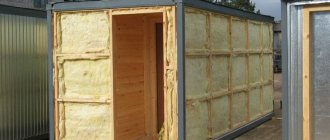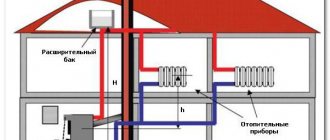Why is it blowing
Determining the weak point is the first step, before insulation. Here are just some of the problems that have become the most common in practice:
- Violation of tightness rules.
- The seal is worn too much.
- The trunnion prevents the frame and sash from fitting tightly to each other.
- The bead does not fit tightly enough.
If you run your palm over the structure, the owner will quickly feel the movement of air where the defect appears.
Where can it blow from?
Manufacturers say that the tightness of the products will be perfect. But there are main ways of heat loss that cause difficulties for most buyers:
- window sill below;
- the seams of the slopes, where the joints are located;
- defective areas near the seal;
- where the sash is adjacent to the window - on the side or top, bottom.
Sometimes the cause of problems is violations during adjustment and installation. The convection movement of air masses can also be mistaken for a draft. This often happens due to a strong temperature difference between the room inside and outside. The result is blowing from plastic windows.
Contacting the experts is the best solution if a defect is discovered and the warranty period has not expired.
Plastic window device
Metal-plastic window design
How to determine
As already mentioned, the simplest solution is to run your hand across the window. If you feel air movement, a draft has formed there. A wet hand improves well-being. There is another principle. A lit candle is brought to the window sash. Particular attention should be paid to joints with window frames.
If the candle oscillates too much, it indicates problems. If it is there, but small, everything is in order.
Reasons for heat loss
Defects in modern window systems appear for the following reasons:
- Incorrect installation.
- Use of low quality materials.
- Manufacturing defect.
Most often in practice, owners encounter the following negative phenomena:
- improper installation of window sills on plastic windows. Because of this, gaps may appear, for example, between the element itself and the monolithic base;
- finishing of slopes and installation were carried out incorrectly. Drafts appear due to poor thermal insulation;
- seals begin to let in cold air over time if they are not maintained according to the manufacturer's requirements. Cheap materials fail most quickly;
- defect in the sash or frame profile;
- the design contains low quality locking elements;
- lack of adjustment of the fittings. The result is insufficient tightness of the sashes and frames;
- uneven installation of windows. Misalignment is the reason for the penetration of cold air inside.
What to do
Getting rid of draft sources is the first stage. The work is done with your own hands, or craftsmen are called in to do it. The second option is more practical. But a competent approach simplifies solving the issue with your own hands. Insulating the slopes of plastic windows inside is not as difficult as it seems.
How to insulate plastic windows for the winter
As already mentioned, there is no need to specially insulate windows. However, in the fall, before the onset of winter cold, you should check the condition of the window and the serviceability of the locking mechanisms. Noticed malfunctions should be promptly eliminated, and the mechanism adjusted if necessary. Yes, and washing the window before the cold season will also be a good decision - how to do this without damage to the plastic window, see our video:
Work is carried out both inside and outside the premises. Inspect the window, check the condition of the connections, the operation of the locks, etc. If you find any problems, write them down. Depending on their complexity, prepare the necessary materials and tools to fix window faults yourself, or invite a specialist.
How to insulate with your own hands
Long-term operation of even high-quality windows is difficult without preventive maintenance and care. The simple option of covering the cracks will not be effective. The window sill and slopes are elements that deserve the closest attention. Winter is not suitable for the procedure; the warm season is optimal.
When to insulate windows for the winter
Insulation and repairs are carried out before the onset of the cold season. This is due to the following requirements:
- Reducing the risk of colds.
- Performing insulation simultaneously outside and inside.
- Protection from drafts.
- Humidity at optimal level.
- Requirements for materials. For example, some of them are used only in a certain temperature range.
- Conditions that are comfortable enough to be inside.
How to insulate at home
Insulation for windows is selected according to the location of the draft.
When insulating window openings
The number of methods and materials is almost unlimited:
- construction tape. Glue it instead of sealant, or on top;
- dry mixes. They are chosen when finishing is needed outside;
- silicone sealants. There should be no ventilation in structures;
- polystyrene foam, polystyrene. An excellent option for insulating slopes;
- mineral varieties of cotton wool. Addition for slopes and window sills inside. Ordinary cotton wool has a limited scope of application;
- polyurethane foam. Expansion helps fill voids around the entire perimeter. Air occupies 90% of the insulation. But there is vulnerability to ultraviolet radiation, changes in humidity, and temperatures.
It is recommended to choose rigid insulation when the installation seam is 3 mm, no more. In other situations, it is better to stick with mineral wool.
It is not recommended to use regular types of tape. After processing with its help, traces remain.
For window blocks
Here, too, you are allowed to choose from several options:
- Mechanical insulation. For example, adjusting fittings.
- Energy saving film.
- Sealants.
- Adhesive tape, construction tape.
- Sealing materials.
How to insulate outside?
There are several directions for such a process as insulating the slopes of plastic windows.
Insulation of slopes
One of the first stages to increase the thermal insulation parameters of windows. Until the insulation from the outside is completed, the cold will penetrate inside. External insulation leads to a shift in dew points. Due to this, dampness with fungi and other harmful microorganisms does not develop.
How to carry out insulation work
The operating procedure looks like this:
- preparation of a rigid form of insulation;
- contamination is removed from slopes and parts of the structure inside;
- applying a primer to the surface;
- install insulation on top of the adhesive solution. Acceptable options include special adhesive foam. Foam as a material eliminates the need for wet work. Setting takes a minimum of time, the material ensures reliable fastening of the material;
- sealing all cracks with glue;
- install corners with perforation;
- install meshes made of polymer materials;
- finish the surface with plaster.
A window frame covered with insulation is excluded; this is monitored separately. The installation seam is completely covered. Otherwise, insulating plastic windows for the winter will not work.
Insulation of ebb tides
Foaming the cracks and placing heat-insulating material inside makes it easier to obtain results in this case. A metal frame against low tide is mounted at the top so that moisture does not fall on the materials in large quantities. The mounting angle of the plank is at least two degrees. 20-30 millimeters - protrusion beyond the facade for the horizontal edge of the plank. Be sure to wrap the side edges at the top. Sealant is used to cover areas with the strip and surface adjacent to each other.
Internal insulation
Everything is expected to be done internally.
Insulation of internal slopes
External factors do not have such a strong influence on these elements. But the appearance must meet more requirements. Insulation is carried out by controlling the property, avoiding its loss.
The work is carried out as follows:
- Treat the cracks. These places are cleaned of dirt, old foam is removed, and the protrusions are treated.
- Apply primer.
- Seal the cracks with polyurethane foam.
- Removing residue when everything is dry.
- Installation of materials for thermal insulation.
- Install drywall.
- Paint, putty - for finishing. The insulation of window openings is now complete.
Window sill insulation
Cold air also penetrates to the places where the window sills meet the walls. Before the next steps, it is important to understand where exactly the defect appeared. The place where blowing occurs can be plastic parts. In this case, a film for insulating plastic windows can help.
The connection between the walls and the window sills is a place where cold air also penetrates. Then you need to take care of insulation before completing the installation of the window sill. They solve the problem with thermal insulation material. When the installation is completed, they move on to foaming the distance from the concrete and brick walls to the window sills.
Determining the location of the air leak in the window
As practice shows, metal-plastic structures have characteristic weak points; it is through them that cold air enters as a result of long-term operation. For example, this could be the location where the bead is installed to secure the glass unit, as well as the seal between the kit and the frame, or the area of the fittings. This also applies to the junction of slopes, wall structures, and window sills.
The presence of air leaks can be determined as follows:
- Using a regular lighter, you just need to draw the flame around the perimeter, which is very quick and practical. If there is a leak, the candle flame will deviate to the side, changing the direction of movement.
- Using only your hand, it is enough to touch the entire plastic structure, after which you can easily find the location of the leak. True, this method is not entirely practical, because if a person has a relatively weak threshold of sensations, he may simply not notice the occurrence of leaks in the structure.
Rice. 4. Correct installation of windows.
These are the two simplest and at the same time effective ways to determine the presence of a leak in a structure, which a technician can easily fix.
Insulation by adjustment
Eliminating skew
The fittings or components of the block require adjustment, without which it is impossible to achieve a high-quality result. How to insulate plastic windows for the winter depends on the consumer and his specific situation.
Replace the seal
You can solve the problem by replacing the rubber seal. It is enough to remove the old material and replace it with new one. Installation - inside the groove. The market offers sealants in black and gray colors. In the first case, the plasticity is higher. White color is associated with deterioration.
Every year, with the onset of autumn cold, many owners of plastic windows have the issue of insulation on their agenda. The harsh climate and, to put it mildly, the mediocre quality of modern windows force people to turn to “grandmother’s” methods - plastic windows are sealed with tape for the winter, with all kinds of self-adhesive seals, and covered with foam rubber. Here I will not explain how to properly insulate plastic windows - I’ll just leave links to the relevant materials in the last paragraph.
And the article will be about what NOT to do, with examples - after all, many “traditional” methods for insulating plastic windows, oddly enough, not only will not lead to the expected result, but can only worsen the situation, provoking subsequent expensive repairs. In this case, the saying may well be true: the best is the enemy of the good.
Insulating plastic windows with tape
Masking tape is perhaps the most harmless option for urgent “insulation” of plastic windows. If the quality is good, it can be peeled off with virtually no traces. But if you don’t have this at hand, and you use ordinary adhesive tape (transparent or brown), expect problems in the spring.
Cleaning windows will take a lot of time, and using strong solvents is strictly not recommended. Many of them easily corrode plastic and damage window rubber. You can only use detergents or special compounds for cleaning PVC (and with caution, some degreasers). I regularly see windows with leftover tape on them - after all, when it’s blowing hard and you need to quickly insulate the window, the possible consequences fade into the background.
Self-adhesive seals and foam, inside the frame
Their sticker from the inside makes absolutely no sense, since the main insulating contour of a plastic window is the perimeter (that is, the very edge) of the sash - the opening part.
In “severe cases,” excess seals can only interfere with the operation of the fittings, which in no way contributes to either the insulation or the durability of the mechanism.
Plugged Drain
You should not plug or seal the drainage holes of plastic windows, for the same reason - from the point of view of protection from drafts, it is practically useless.
But with sudden warming, or a sudden spring thunderstorm, there is a very real possibility of water flooding the windowsill, and even the floor.
Sticker of additional seals along the “native” rubber, or under it
But in no case should you do this, even if at first it seems that such insulation of the plastic window helped.
Such actions lead, firstly, to excessive load on the mechanism ( as a result of which it may simply break in the coming winter ), and secondly, the original window seal very quickly becomes completely unusable. After removing such “insulation”, dried glue strips usually remain (the same problem as with adhesive tape). For any service technician, repairing such a window is a pleasure - adjusting the sash, replacing the seal, cleaning up traces of glue, and sometimes even completely replacing the fittings. And if you contact a large company, then the total cost of such a comprehensive repair may even be comparable to the price of a new window. In this case, you have to pay not even twice, but three times.
What should we do then? - you ask. How to properly insulate a plastic window and not cause harm to it and damage to yourself?
There are two options.
1) Figure out why cold air is coming from the window - for example, read this and this material, and, if possible, take the necessary measures yourself;
2) Call a known good, experienced specialist to insulate plastic windows. This will cost you several times less than possible repairs or replacement of components (not to mention the troubles that a broken window can cause if it suddenly happens in winter).
Good luck!
Additional methods
There are several solutions that increase the effect of processing:
- washing windows. Cleaning the glass unit, even something as simple as this, also helps save heat;
- use of thick curtains. Heat and cold pass through them poorly;
- insulation using improvised means. They lead to damage to appearance, but are suitable for critical and extreme situations. Use soaked paper, white strips, foam rubber, and so on;
- heat-saving film. The entire surface is covered, up to the valves. The main thing is that air bubbles and folds are unacceptable. Afterwards, heat loss due to glass is reduced by 75%, or even more;
- electric heating. Special heating cables are placed around the window;
- electric heating for double-glazed windows. Properties are set during production;
- an integrated approach that combines several previous ones.











